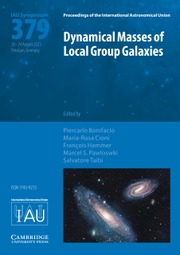No CrossRef data available.
Panel discussion: Methodology for fusion of large datasets
Published online by Cambridge University Press: 01 August 2025
Abstract
During the IAU symposium, 368 “Machine Learning in Astronomy: Possibilities and Pitfalls” in Busan, we organized a panel discussion on the different aspects of data-fusion for large data-sets. Driven by the needs of the scientists, data-fusion technics had been introduces to enable multi-wavelength as well as multi-messenger approaches. This is necessary to get a more detailed and more complete representation of physical phenomena. We identified six different aspects related to data-fusion. Those aspects cover missing data, heterogeneous data, data-access in general, challenges related to data-size, FAIR-data, and future challenges.1
Information
- Type
- Transactions Meeting Report
- Information
- Proceedings of the International Astronomical Union , Volume 19 , Symposium S368: Machine Learning in Astronomy: Possibilities and Pitfalls , August 2023 , pp. 56 - 57
- Copyright
- © The Author(s), 2025. Published by Cambridge University Press on behalf of International Astronomical Union
Footnotes
This article is based on a panel discussion at the IAU Symposium 368 held in South Korea (2022) chaired by Kai Polsterer.


